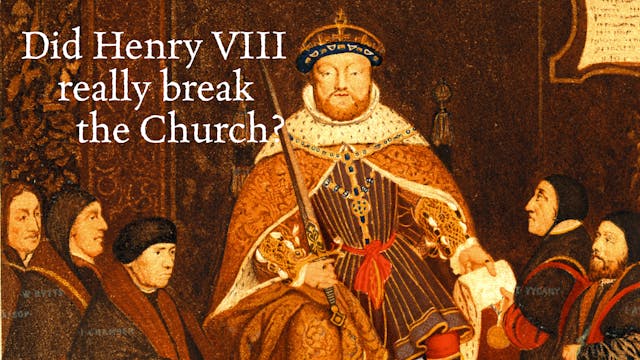Singing the Saints in Medieval England: Curious Case St Katherine of Alexandria
The Middle Ages
•
1h 10m
The art and architecture of medieval churches was inextricably linked with the rituals that inhabited them: the Christian liturgy. Every year on November 25th, churches and monasteries across the country resounded with plainchant and polyphony dedicated to the saint that England had come to claim as its own: St Katherine of Alexandria.
Much of the groundwork for St Katherine’s late medieval popularity was laid by a plainchant liturgy composed in England in the late eleventh century and ultimately disseminated throughout the continent—a rare example of an English liturgical composition supplanting continental observations.
What was a liturgy for a saint, and why did it matter? What made these particular chants, and through them, St Katherine herself, appealing to singers and communities?
In this lecture Dr James Blasina proposes that the English liturgy for St Katherine reveals an alternative model of medieval womanhood that valorised women’s speech and political participation. With St. Katherine as a case study, attendees will discover the workings of the medieval Christian liturgy, its centrality to both spiritual and every-day life, and the ways it could be customised to meet local needs.
Dr. James Blasina, Ph.D is Assistant Professor Music at Swarthmore College, Pennsylvania, USA. His research currently focuses on the medieval cult of St. Katherine of Alexandria, with a focus on music in England, and the links between saints’ cults, gender, and identity.
Up Next in The Middle Ages
-
Did Henry VIII Really "Break" The Chu...
When we think of the pre-Reformation parish church, prior to King Henry VIII’s supposed “stripping of the altars”, the image conjured is often of an arena of visual delights; filled to the brim with all the smells and bells of traditional Catholicism—a highly sensory type of worship that offered ...
-
Contextualising Carved Cadavers Memor...
This talk explores the carved cadaver memorials in England. It places them in their theological and vernacular religious context, as well as providing a little information on where they sit in relation to images of the dead in medieval culture, and their connection to the body. It also touches on...
-
Uncommon Prayer: The Tudor Chapel Roy...
In the 16th century, the Chapel Royal was both at the heart of the Ecclesiastical Establishment as the personal chapel of the Supreme Governor, but at the same time very much outside it, even for a time, maintaining, along with the Royal Colleges of Westminster and Windsor, a form of liturgy that...



